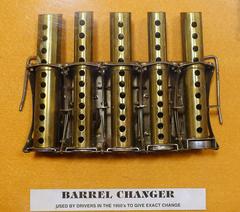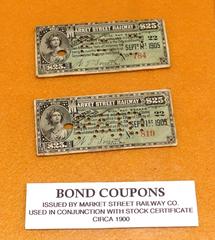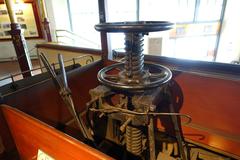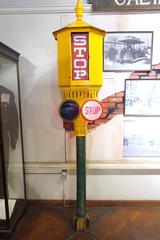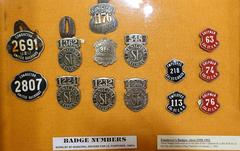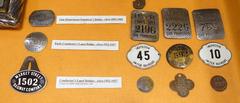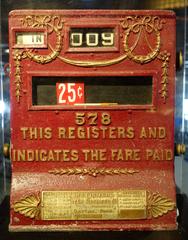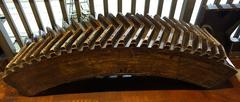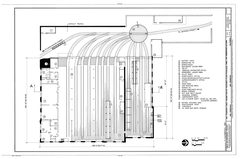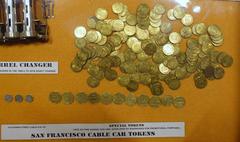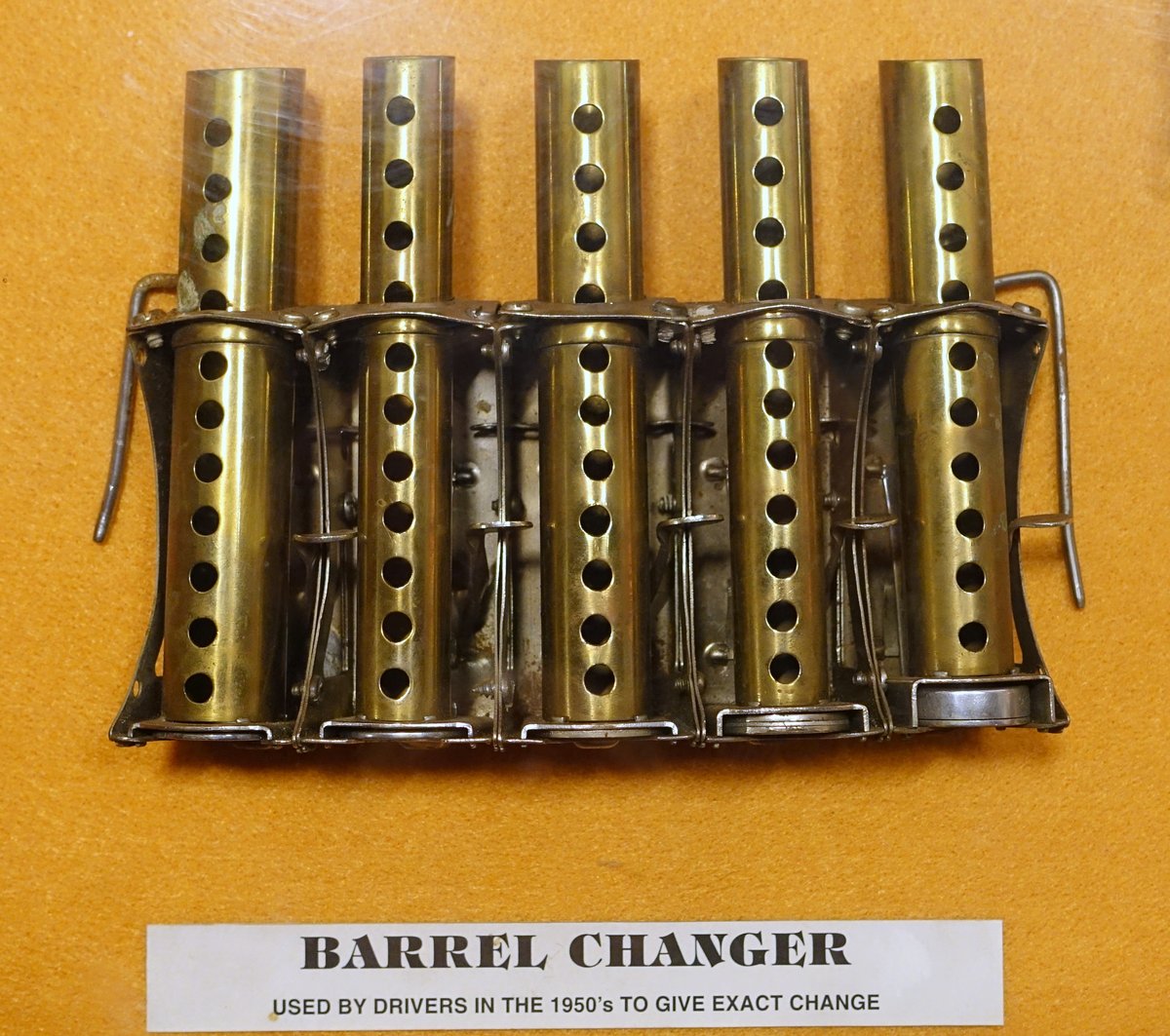
San Francisco Cable Car Museum: Visiting Hours, Tickets, and Travel Guide
Date: 14/06/2025
Introduction
San Francisco’s cable cars are more than just a mode of transportation—they are living symbols of the city’s innovative spirit, resilience, and multicultural heritage. Invented in 1873 by Andrew Smith Hallidie to tackle the city’s steep hills, the cable car system revolutionized urban transit and remains the world’s last manually operated cable car network (SFMTA; Cable Car Museum). Today, the San Francisco Cable Car Museum at 1201 Mason Street in Nob Hill invites visitors to explore the remarkable history, engineering, and cultural impact of these iconic vehicles through interactive exhibits and real-time views of the operational machinery (SFTourismTips; sanfrancisco.net).
This guide provides all the essential information for planning your visit—covering hours, admission, accessibility, travel tips, museum highlights, and nearby attractions. Whether you’re a history buff, engineering enthusiast, or first-time visitor to San Francisco, this article will help you make the most of your cable car experience (CityPASS; Fisherman’s Wharf; Holidify; sfcablecars.org).
Table of Contents
- Introduction
- Historical Background of San Francisco’s Cable Cars
- Visiting Information
- Museum Exhibits and Features
- Nearby Attractions
- Frequently Asked Questions (FAQ)
- Practical Tips for Visitors
- Conclusion and Recommendations
- References
Historical Background of San Francisco’s Cable Cars
Origins and Invention
Andrew Smith Hallidie devised the cable car system after seeing horses struggle on San Francisco’s steep hills. He adapted wire rope technology, initially used in mining, to create a steam-powered, cable-driven rail system—the first test run occurred on Clay Street in August 1873 (SFMTA; Cable Car Museum). The system’s key innovation was a continuously moving steel cable beneath the street, which cars could grip or release using a mechanical lever (CityPASS).
Golden Age and Expansion
By 1890, San Francisco boasted 23 cable car lines operated by eight companies, serving more than 50 miles of track. The cable car became the primary means of public transit, outpacing horse-drawn carriages and early electric streetcars, and was a defining symbol of the city’s rapid development (SFTourismTips; CityPASS).
The 1906 Earthquake and Decline
The 1906 earthquake and subsequent fires devastated much of the cable car system. As electric streetcars grew more cost-effective, cable car lines gradually declined, with only those serving the steepest hills surviving (usareisetipps.com; SFTourismTips).
Preservation and National Significance
Public advocacy, especially the 1947 “Save the Cable Cars” movement led by Friedel Klussmann, secured the system’s survival. The cable cars were designated a National Historic Landmark in 1964, cementing their place as an enduring part of San Francisco’s identity (CityPASS; Fisherman’s Wharf).
Technical Innovations
The cable cars operate by gripping a continuously moving steel cable, powered by giant winding machinery housed in the Washington/Mason powerhouse (wikiusa.org; SFTodo). There are two main car types: the larger, bidirectional California Street cars and the smaller Powell Street cars, which require turntables to reverse direction (CityPASS; The Atlas Heart).
The Cable Car Museum
The San Francisco Cable Car Museum is located in the operational heart of the system. Visitors can view historic cable cars, archival artifacts, photographs, and the powerful winding wheels driving the city’s remaining lines (SFTourismTips; SFillusions). Admission is free.
Visiting Information
Hours and Admission
- April 1 – September 30: Open daily, 10:00 am – 6:00 pm
- October 1 – March 31: Open daily, 10:00 am – 5:00 pm
- Closed: New Year’s Day, Easter, Thanksgiving, Christmas
Admission is free. Donations help support museum operations and preservation (Holidify).
Location and Getting There
- Address: 1201 Mason Street, Nob Hill, San Francisco
- Public Transit: Accessible via Powell-Hyde and Powell-Mason cable car lines; also reachable by Muni bus.
- Parking: Limited street parking available; public transit is strongly recommended (sanfrancisco.net).
Accessibility
The museum features ramps and elevators for wheelchair access, though some historic areas may be more challenging to navigate. It’s advisable to call ahead for specific needs (SFMTA accessibility).
Travel and Ticket Tips
- Cable Car Tickets: $8 per ride for adults (as of 2025). Purchase from conductors (cash), ticket booths, or the MuniMobile app. Visitor Passports offer unlimited rides for one or several days.
- Best Times to Visit: Weekday mornings and late afternoons are least crowded. Early morning rides have shorter lines.
- Plan for Crowds: At popular stops like Powell-Hyde Turnaround, lines can exceed an hour during peak season (takemetotheworld.com).
- Accessibility: California Street line is generally the most accessible for those with mobility challenges.
- Combine Your Visit: Pair your museum visit with a cable car ride for a full experience.
On-site Amenities
- Gift Shop: Books, apparel, souvenirs, and authentic cable car bells.
- Restrooms and Brochures: Available for visitors.
Museum Exhibits and Features
- Historic Cable Cars: See restored vehicles from the 1870s, including the original grip car No. 8 and Sutter Street Railway No. 46.
- Powerhouse Viewing Gallery: Watch the massive wheels and cables in action through a glass overlook (takemetotheworld.com).
- Artifacts and Archives: Explore original grips, uniforms, fare boxes, historic signage, and photographs.
- Educational Exhibits: Interactive panels, videos, and diagrams explain the system’s mechanics and history.
- Family-Friendly: Hands-on displays and videos make the museum engaging for all ages.
Nearby Attractions
- Chinatown: Historic temples, vibrant shops, and excellent dining.
- North Beach: San Francisco’s Italian district, with cafes and literary landmarks.
- Union Square: Shopping, theaters, and public art.
- Fisherman’s Wharf: Seafood, Pier 39, and sea lions.
- Grace Cathedral and Fairmont Hotel: Landmarks within walking distance.
- Powell-Hyde Turnaround: Watch cable cars being manually turned.
Frequently Asked Questions (FAQ)
Q: What are the San Francisco Cable Car Museum’s visiting hours?
A: 10:00 am to 6:00 pm (April–September); 10:00 am to 5:00 pm (October–March), closed major holidays.
Q: Is admission free?
A: Yes, no tickets required; donations appreciated.
Q: Are cable car rides included with museum admission?
A: No, purchase tickets separately from the conductor, ticket booths, or the MuniMobile app.
Q: Is the museum wheelchair accessible?
A: Yes, with ramps and elevators. Some areas may be challenging due to the historic building design.
Q: Are guided tours available?
A: Occasionally for special events; check the museum website for updates.
Q: How long should I plan for a visit?
A: 45 minutes to 1.5 hours is typical.
Practical Tips for Visitors
- Arrive Early: For both the museum and cable car rides, mornings are least crowded.
- Combine Attractions: The museum’s central location makes it easy to visit Chinatown, North Beach, or Fisherman’s Wharf in the same trip.
- Check Service Updates: Cable car lines may experience closures or substitutions during maintenance—consult the SFMTA website for current info.
- Photography: Allowed throughout the museum; best lighting is in the morning.
- Family and Groups: Interactive exhibits make the museum suitable for all ages; large groups should call ahead.
Conclusion and Recommendations
The San Francisco Cable Car Museum is a captivating destination for anyone interested in history, technology, or local culture. With free admission, live demonstrations of the cable car powerhouse, and engaging exhibits, the museum offers a memorable educational experience for visitors of all ages. For the fullest experience, pair your museum visit with a cable car ride and explore the vibrant neighborhoods along the routes. Plan ahead to avoid crowds, use the MuniMobile app for tickets, and don’t forget to check for special events or guided tours.
Stay informed by visiting the museum’s official website and the SFMTA portal. For personalized tips and real-time updates, download the Audiala app and follow us on social media.
References
- San Francisco Cable Cars: History, Visiting Hours, Tickets, and Travel Tips for an Iconic Experience, 2025, SFMTA
- Explore San Francisco’s Cable Car Museum: Visiting Hours, Tickets & History Guide, 2025, Cable Car Museum
- San Francisco Cable Car Museum Visiting Hours, Tickets, and Visitor Guide, 2025, Holidify
- San Francisco Cable Car Museum Visitor Guide: Visiting Hours, Tickets, and Cultural Significance, 2025, SanFrancisco.net
- CityPASS San Francisco Cable Car History, 2025
- Fisherman’s Wharf Cable Cars, 2025
- Tripsavvy San Francisco Cable Car Museum, 2025
- Takemetotheworld San Francisco Cable Car Experience, 2025
- SFCableCars.org Learn About Cable Cars, 2025
- SFMTA Accessibility, 2025
